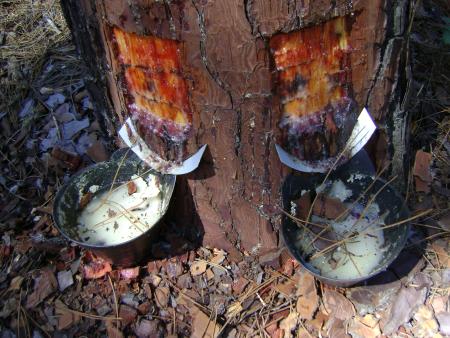
Objective:
In order to ensure the sustainability of the exploitation of pine resin and to guarantee that it is guided by good management practices - promoting the vitality of pine forests and forest protection practices, contributing with relevant annual revenues - it was considered necessary, in Portugal, to define a legal regime, simplifying and concentrating all the rules in a single legal document. This legislation is an essential knowledge tool for authorities and economic agents, focusing on the production, exploitation and dynamics of resin from the forest to the industrial processing unit.
Context:
Resin tapping is one of the oldest economic exploitation activities of maritime pine and stone pine in Portugal. It has contributed to the socio-economic development of some of the most depressed regions of the country, providing employment and income opportunities and improving the profitability of forestry activities. In Portugal, resin tapping has been regulated by specific legislation since 1957. In 2015, the Government approved Decree-Law 181/2015, which establishes clear rules for resin activity and the circulation of resin in mainland Portugal.
Contacts:
Paula Soares, paulasoares@isa.ulisboa.pt
Further information:
Decree-Law 181/2015 of 28 August :
https://dre.pt/application/conteudo/70133815